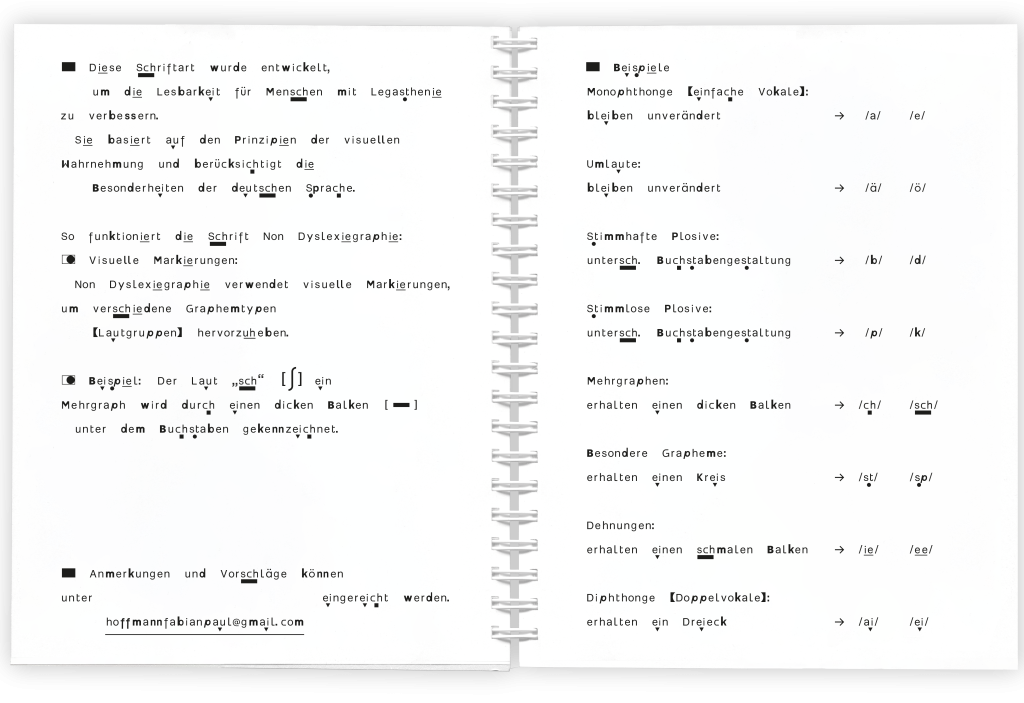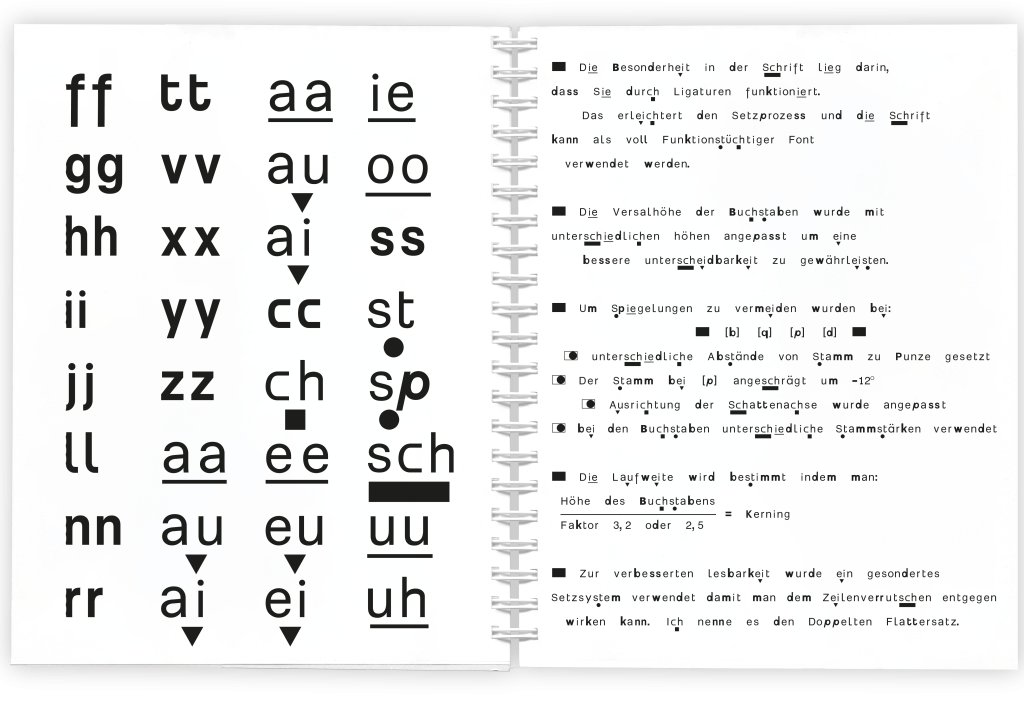Entwicklung einer Schrift zur verbesserten Lesbarkeit für Legastheniker: Darstellung in Form eines Buches mit klassischer Literatur für das Abitur.
Diese Bachelorarbeit befasst sich mit der Entwicklung und Evaluation einer neuartigen Schriftart, die speziell auf die Bedürfnisse von Menschen mit Legasthenie zugeschnitten ist. Legasthenie, auch bekannt als Lese-Rechtschreib-Schwäche, ist eine weit verbreitete Lernstörung, die das Lesen und Schreiben erschwert. Betroffene haben Schwierigkeiten, Buchstaben zu erkennen, Wörter zu entschlüsseln und Texte flüssig zu lesen. Herkömmliche Schriftarten sind oft nicht auf die besonderen Bedürfnisse von Legasthenikern abgestimmt, was zu Frustration, Ermüdung und einem verminderten Leseverständnis führen kann.
Ziel dieser Arbeit war es, eine Schriftart zu entwickeln, die die Lesbarkeit für Menschen mit Legasthenie verbessert und ihnen den Zugang zu Bildung und Information erleichtert. Dazu wurden die kognitiven und visuellen Herausforderungen von Legasthenikern analysiert und auf Basis von Erkenntnissen aus der Legasthenieforschung und den Prinzipien der Typografie spezifische Schriftmerkmale identifiziert, die die Lesbarkeit fördern.
Im Rahmen eines iterativen Designprozesses wurden verschiedene Schriftentwürfe erstellt, getestet und optimiert. Die finale Schriftart wurde in einem Buchlayout mit klassischen Abiturtexten angewendet, um ihre praktische Anwendbarkeit zu demonstrieren. Die Evaluation der Schrift erfolgte anhand von Lesetests und Befragungen sowie durch einen Vergleich mit herkömmlichen Schriftarten. Die Ergebnisse der Evaluation zeigen, dass die neu entwickelte Schriftart die Lesbarkeit für Menschen mit Legasthenie signifikant verbessert. Die Teilnehmerinnen der Lesetests konnten die Texte in der neuen Schrift schneller und genauer lesen und gaben an, die Texte besser zu verstehen und mit weniger Anstrengung lesen zu können. Diese Arbeit leistet einen wichtigen Beitrag zur Inklusion von Menschen mit Legasthenie im Bildungsbereich. Die Schriftart kann in Schulbüchern, Lernmaterialien und Prüfungsaufgaben eingesetzt werden, um legasthenischen Schülerinnen den Zugang zu Bildung zu erleichtern und ihre Chancengleichheit zu fördern. Darüber hinaus hat die Schrift das Potenzial, auch in anderen Bereichen Anwendung zu finden, wie z.B. in der beruflichen Bildung, im öffentlichen Raum und in digitalen Medien.
This Bachelor thesis focuses on the development and evaluation of a novel typeface specifically tailored to the needs of people with dyslexia. Dyslexia, also known as a reading and spelling disorder, is a widespread learning disability that makes reading and writing difficult. Those affected have difficulty recognizing letters, decoding words, and reading texts fluently. Conventional typefaces are often not designed for the specific needs of dyslexics, which can lead to frustration, fatigue, and reduced reading comprehension. The aim of this thesis was to develop a typeface that improves readability for people with dyslexia and facilitates their access to education and information. For this purpose, the cognitive and visual challenges of dyslexics were analyzed and, based on findings from dyslexia research and the principles of typography, specific font features that promote readability were identified.
In the course of an iterative design process, various font designs were created, tested, and optimized. The final typeface was applied in a book layout with classic high school texts to demonstrate its practical applicability. The evaluation of the typeface was carried out by means of reading tests and questionnaires as well as by comparison with conventional typefaces. The results of the evaluation show that the newly developed typeface significantly improves readability for people with dyslexia. The participants in the reading tests were able to read the texts in the new typeface faster and more accurately and stated that they understood the texts better and could read them with less effort. This thesis makes an important contribution to the inclusion of people with dyslexia in the field of education. The typeface can be used in textbooks, learning materials, and examination tasks to facilitate dyslexic students‘ access to education and promote their equal opportunities. In addition, the typeface has the potential to be used in other areas as well, such as in vocational training, public spaces, and digital media.
Fabian Hoffmann: @instagram.com/drauf_wie_ein_dach
Prof. Roger Walk (1), Prof. Lars Harmsen (2), FH Dortmund, 2025




